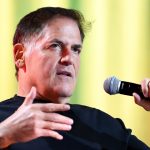The 2025 Wellness Budget Revolution: How HR Leaders Are Investing Smarter
Corporate wellness has reached an inflection point. Gone are the days when HR teams could simply offer gym memberships and call it a strategy. In 2025, forward-thinking organizations are fundamentally reimagining their approach to employee well-being and are seeing remarkable results. According to Deloitte's latest research, companies that strategically reallocate wellness budgets are achieving 23% higher employee productivity and 31% lower turnover rates compared to peers clinging to traditional models.
Artificial Intelligence: The End of Guesswork in Employee Health
HR departments are shifting decisively toward data-driven wellness solutions. Artificial intelligence is at the forefront of this transformation, replacing guesswork with hyper-personalized health optimization. Dr. Sarah Jones, Director of Workplace Health Innovation at Stanford University, explains that modern AI platforms can now analyze thousands of data points, from sleep patterns to meeting frequency, to predict burnout risks weeks before symptoms emerge. At JPMorgan Chase, their AI-powered "Health HQ" platform has reduced stress-related absences by 28% and cut unnecessary healthcare spending by $3.2 million annually. This system combines wearable device data with work pattern analysis to deliver personalized interventions, whether it's suggesting a mental health day or adjusting project timelines. Companies are increasing AI analytics platform spending by 65%, while simultaneously decreasing generic wellness program costs by 40%, with new budget lines appearing for predictive health risk modeling.
Mental Health as Core Infrastructure
The most significant budget increases are flowing into mental health initiatives, marking a critical shift in approach. In 2025, the focus has moved beyond offering therapy benefits to creating psychologically safe ecosystems. Dr. Michael Freeman, Clinical Professor of Psychiatry at UCSF, emphasizes that these are no longer optional perks but essential workplace infrastructure. For example, Siemens has introduced an AI-powered care navigation system that matches employees with ideal mental health resources in under 90 seconds. Amazon has installed VR meditation pods in fulfillment centers, which have reduced reported stress levels by 41%. Salesforce's unlimited therapy program has led to a 31% decrease in burnout-related turnover. Many leading companies now allocate 35–45% of their total wellness budgets to mental health programs.

The Rise of Precision Employee Health
Another transformative development is the rise of precision employee health, where organizations invest in biologically personalized wellness programs that yield impressive returns. Google provides executives with epigenetic aging tests and tailored longevity plans, BP equips field teams with continuous glucose monitors to optimize energy and focus, and BlackRock includes quarterly blood biomarker testing in its leadership development efforts. According to Dr. Peter Attia, founder of Early Medical, these precision health strategies are no longer exclusive to elite athletes. Knowledge workers are seeing cognitive performance improvements of 15–20% through targeted biological optimization. Though these programs come with a higher upfront cost of $800 to $1,500 per employee, Deloitte reports that they offer $4.30 in healthcare savings and productivity gains for every dollar invested.
What’s Being Left Behind
To fund these advanced wellness initiatives, HR teams are phasing out underperforming programs. On-site gyms, which average only 12% employee participation, generic health screenings, and one-size-fits-all wellness challenges are being retired in favor of more effective alternatives. These include sleep optimization coaching linked to 19% productivity gains, financial wellness programs that reduce money-related stress by 41%, and micro-learning mental health apps with 73% engagement rates. Cisco's recent wellness budget overhaul is a prime example. By reallocating $3.2 million from outdated perks to targeted mental health and precision wellness efforts, the company achieved a 22% reduction in voluntary turnover, an 18% decrease in healthcare costs, and a 15-point improvement in employee wellbeing scores.
The 2025 Wellness Budget Blueprint
The emerging standard for wellness budget allocation among top-performing companies is clear. Mental health ecosystems now command around 40% of total spend, encompassing therapy and coaching access, manager training programs, and stress reduction technologies. Precision health accounts for 30%, covering biomarker testing, metabolic optimization, and DNA-based interventions. Financial wellness makes up 20%, supporting student loan assistance, retirement planning, and emergency fund programs. The remaining 10% goes toward targeted perks such as ergonomic equipment, healthy meal options, and fitness stipends.
The Future of Workplace Wellness
Looking beyond 2025, several trends are beginning to shape the future of workplace wellness. Companies like Microsoft are integrating wellness metrics into leadership scorecards and promotion criteria. Personalized health AI assistants, or "health butlers," are being tested to manage everything from meeting schedules to supplement regimens based on real-time biometrics. Additionally, blockchain-based health records, often in the form of NFTs, are enabling secure, portable, and employee-owned health data.
Dr. Jones concludes that the organizations poised to thrive in the coming years are those that treat employee wellness as a strategic advantage rather than a compliance obligation. In the talent wars of tomorrow, it will be the healthiest companies that ultimately win.
Related: A Dark New Threat: The Rise of Deepfake Nudity Apps














